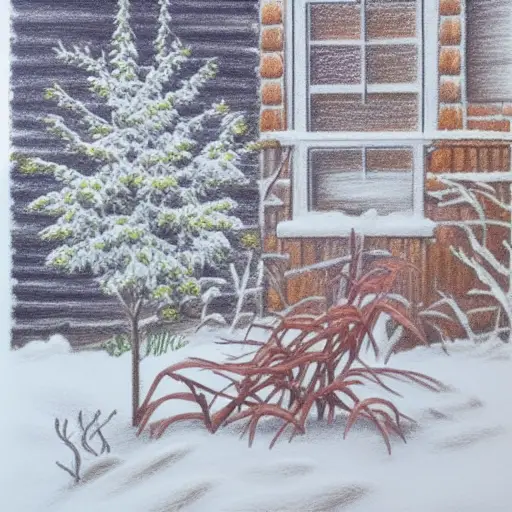The cold weather is upon us and you may be longing to do some gardening or yardwork. Here are some tips to make your winter gardening easier. First, consider what types of plants are hardy in cold climates. Also, consider crops that do well in a cool climate. Avoid using fertilizers, and rotate your crops if you want to get the most out of your plants in the coldest weather.
Do’s and don’ts of winter gardening
There are plenty of things you need to remember when winter gardening. Unless you live in a temperate climate, you won’t be able to grow much without proper preparation. Luckily, some plants can be grown in winter, including lettuce, spinach, and peas. While they may not be as vigorous as those that thrive in warmer weather, they still need some care to survive. Those plants should be covered and watered regularly.
The morning temperatures can drop to single digits, and winter temperatures can make your plants prone to rot. If you’re planning on growing any perennials, you should start them before winter sets in. Also, keep in mind that it’s best to avoid planting sun-loving species during this time.
It’s best to start plants from seeds instead of buying them. This will save you money and allow you to have a wider selection of plants. You can also choose unusual varieties that you might not normally grow in your garden. When planting your seeds, make sure to read the seed packet to determine when it’s best to plant them. Alternatively, you can check your local Extension service website for more information on planting times and tips.
Plants that do well in cold weather
While cold weather can kill off most plants, there are some that are resistant to the cold and can be successfully grown during winter gardening. Plants that do well in cold weather include agave, which is commonly used in landscaping. They can tolerate temperatures as low as minus five degrees Fahrenheit.
Snowdrops can tolerate low temperatures and do well in sheltered areas. They can be planted after the last frost has passed. These beautiful bulbs make a nice addition to bare spaces. Divide snowdrops every three to four years to keep them healthy. While some flowers can survive very cold temperatures, some do better in warmer areas.
Plants that do well in cold weather include broccoli, cabbage, cauliflower, Brussels sprouts, and mustard greens. Some vegetables grow well in lower temperatures, like spinach. Other cold-hardy vegetables include lettuce, celery, and kale. You can also grow ornamental plants to add color to your garden.
Radishes and cabbage are great vegetables for winter gardening. Both of these plants do well in cold conditions and respond well to sunny, crisp temperatures as low as 50 degrees. They can also survive frost spells and grow to maturity. If you live in a warm region, you can start growing radishes and cabbage in September.
Crop rotation
Crop rotation is an important part of gardening, both for the health of your soil and to keep pests and diseases at bay. It also improves soil fertility, making it more available for plants. Crop rotation allows you to keep your beds in constant production, minimizing the need for amendments and artificial fertilizers.
To use crop rotation, it is essential to rotate crops of different families each season. This way, you will avoid the problem of disease and pest outbreaks that can be caused by the same plants. For example, you can’t plant one plant from one family in the same area consecutively. Besides that, crops from the same family tend to have the same pest problems.
Rotating your crops allows for more variety in your garden. Warm-season vegetables such as artichokes, eggplant, melons, peppers, summer squash, tomatoes, and cucumbers are prone to certain diseases. In addition, if you grow the same type of crops in one area year after year, the disease-causing organisms can remain in the soil for years. Therefore, crop rotation is necessary to prevent these diseases from affecting your vegetables in the future.
When planting in winter, cover crops like legumes are an excellent choice for adding nitrogen to the soil. Their nodules contain specialized bacteria called rhizobia. They also help break up the soil structure and prevent compaction. By adding nitrogen to your soil, you are ensuring that your leafy crops get enough nitrogen as well.
Avoiding fertilizers
Fertilizing your plants in the winter months is generally frowned upon, but some plants can still benefit from a fertilizing, especially if you use a diluted fertilizer. Using a diluted fertilizer will prevent your plants from being burned and will help them grow strong and healthy.
In addition to compost, you can use organic fertilizers like fish emulsion or kelp. Organic fertilizers have been shown to support the soil microbiology, which will keep plants healthy throughout the winter. If you’re not sure if your soil is suitable for planting your plants in winter, you can conduct a soil test with the UGA Cooperative Extension. Depending on your soil type, you may need to adjust your fertilization routine accordingly. For example, if you grow leafy greens, like spinach or kale, you’ll need to apply more nitrogen to them.
Fertilizing new growth in the fall and winter is a great way to encourage healthy growth, but don’t forget to follow the manufacturers’ instructions. Fertilizing new growth too early can cause tender new growth to be damaged by cold weather. To avoid this problem, you can put your fertilizer application schedule in your calendar and adhere to it.
Cleaning up weeds
The winter months are the perfect time for cleaning up weeds in your garden. Weeds are a nuisance to any lawn and garden. They can spread by seed and take over the entire area, so it’s important to identify and control them as early as possible. Here are some tips to keep weeds out of your garden.
The best time to deal with weeds in winter is early in the season before the small seeds spread by wind, snow, and pets. Use a hand tool to dig up weeds and remove as much of the plant as possible. Then, cover the ground with mulch to prevent weeds from growing back.
Weeds can steal valuable nutrients from the soil and will spread quickly. It is also easier to pull weeds when they’re young because they have tiny roots. Ideally, you should use a hoe in the morning when the soil is dry. This will help create a dust mulch around the weeds that will prevent the germination of new weeds. After the weeds are removed, they can be dried in the sun, or taken to a compost pile.
To clean up weeds in winter, wait until temperatures reach at least 50 degrees Fahrenheit before you start digging in your garden. Many types of pollinators will hibernate in the stems of plants during the winter, so wait until the ground has warmed up a bit to avoid disturbing these creatures. Also, you don’t want to walk on frozen ground, which can cause compaction.
Pruning deciduous plants
When it comes to pruning deciduous plants, the best time of year to do so is in winter, when temperatures are milder and the leaves are less dense. However, you should still be very careful when pruning these trees, since pruning can harm them. To help you prune correctly, garden staff at the Garden offer tips and techniques throughout the year.
Pruning deciduous plants for winter can be a great way to improve the shape of your garden. You can cut off damaged, diseased, or crossing branches to shape the plant. This will prevent damage and disease from spreading, and it will also let more light reach your garden during the winter.
Depending on the type of pruning you need to do, you may need to wear gloves and work boots. However, in general, you should work from the ground when pruning deciduous plants. This will help you perform the task correctly, and will ensure that you have a safe and effective pruning experience.
The best time to prune deciduous trees is in the late fall or winter. You can also prune non-blooming shrubs in summer if you wish. However, do not prune tree branches that produce heavy amounts of sap.
Moving dormant plants indoors
Bringing dormant houseplants indoors for winter gardening is a great way to give them a fresh start. Houseplants usually require only a little bit of extra care and attention during the winter months. You will want to keep the soil moist but not too moist. If it’s too dry, you’ll want to water the plants periodically before spring.
Plants that have grown outdoors during summer months will need to be brought indoors for the winter. This is a natural process for most plants, though some will need some coaxing. The lower temperatures and shorter days will cause plant growth to slow down. Although foliage growth slows down, the roots will continue to grow. Some houseplants may even need to be moved to a cool room in your house.
During the winter months, humidity will begin to drop, and you will need to adjust the humidity level inside the house. For plants that require high humidity, you can place them on a tray of pebbles and add water. Also, make sure you clean off any dust that accumulated on the leaves. This will help the plants absorb more light.













